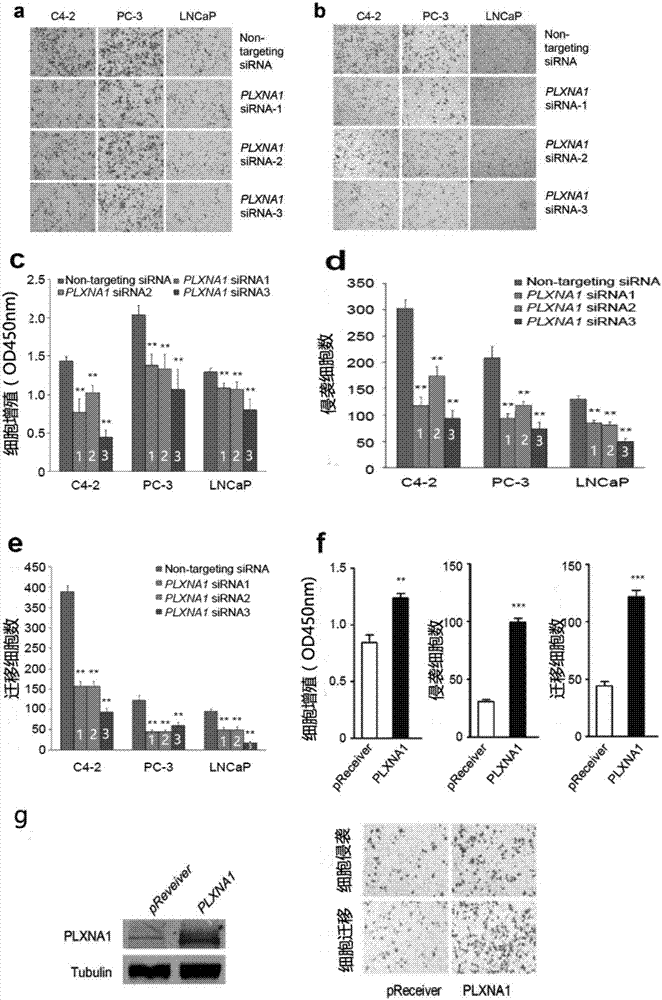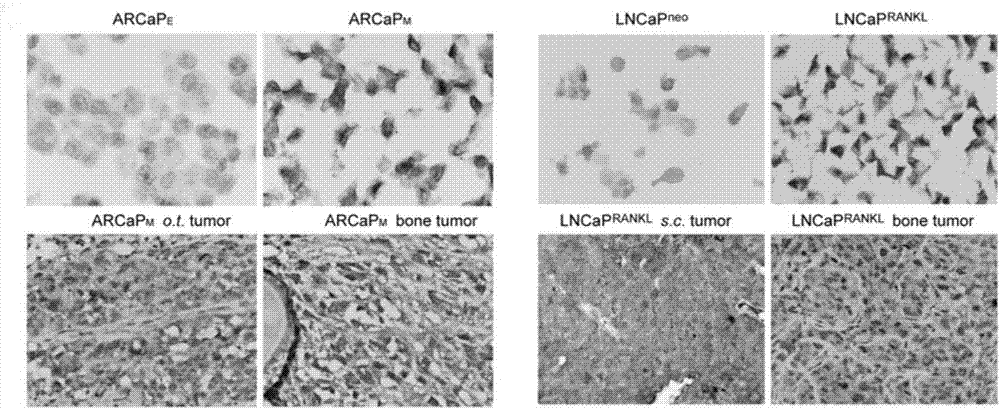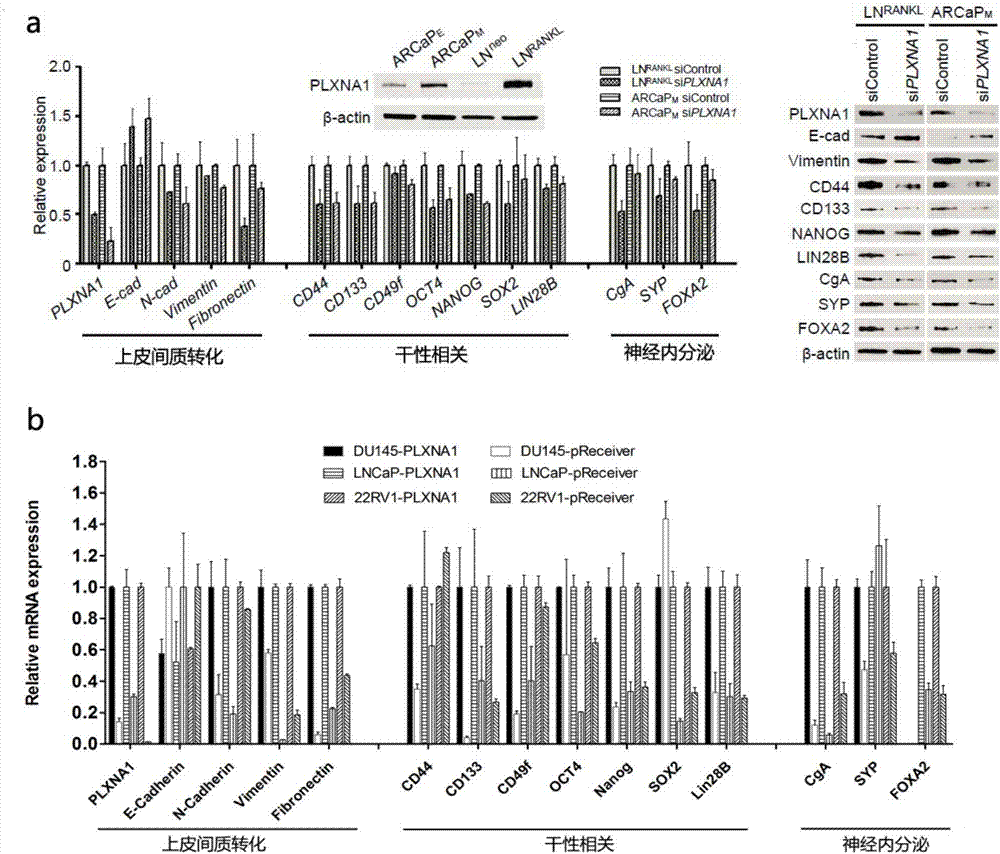Prostatic cancer marker PLXNA1 and application thereof
A prostate cancer and marker technology, applied in the field of cancer diagnosis, can solve the problem of lack of molecular typing markers in prostate cancer
- Summary
- Abstract
- Description
- Claims
- Application Information
AI Technical Summary
Problems solved by technology
Method used
Image
Examples
Embodiment 1
[0054] Example 1 Expression of Cellular Level PLXNA1
[0055] (1.1) Effect of si-RNA-mediated knockdown of PLXNA1 on cell phenotype
[0056] The present invention detected the effect of si-RNA-mediated PLXNA1 knockdown on cell phenotype, and found that after si-RNA knockdown of PLXNA1 expression, the invasion ability of prostate cancer cells was significantly reduced ( figure 1 a) and migration ability ( figure 1 b). In the different types of prostate cancer cell lines detected (including C4-2, PC-3, LNCaP), knocking down the expression of PLXNA1 by si-RNA significantly reduced the ability of cell proliferation, invasion and metastasis ( figure 1 c-e).
[0057] The prostate cancer cell lines involved in the experiment were all derived from American ATCC cell lines, and the cells were cultured in RPMI 1640+10% fetal bovine serum, placed in a 5% CO2 incubator at 37°C.
[0058] Before the invasion and migration experiments, the cells were divided into 6-well plates, and 100nM...
Embodiment 2
[0065] Example 2 Tumor-bearing nude mouse model to evaluate the effect of PLXNA1 knockdown on cell proliferation.
[0066] (2.1) Effect of shRNA-mediated PLXNA1 knockdown on tumor volume and weight
[0067] The effect of PLXNA1 knockdown on cell growth was assessed in vivo using a tumor-bearing nude mouse model. In nude mice with shRNA-mediated PLXNA1 stably knocked down cells, tumor volume and weight were significantly lower than those in control mice ( Figure 4 a).
[0068] (2.2) Effect of PLXNA1 overexpression on tumor growth in tumor-bearing nude mice
[0069] The present invention subcutaneously injects tumor cells into the nude mice of the control group or the experimental group by subcutaneously bearing tumors, observes the proliferation of tumor cells, and finds that the overexpression of PLXNA1 significantly enhances the growth of tumors in the nude mice bearing tumors.
[0070] Specifically, tumor-bearing mice with PLXNA1-overexpressed prostate cancer cell lines ...
Embodiment 3
[0089] Example 3 The clinical significance of PLXNA1 in the development and prognosis of prostate cancer
[0090] (3.1) Expression of PLXNA1 in metastatic prostate cancer
[0091]In order to evaluate the clinical significance of PLXNA1 in the occurrence and development of human prostate cancer, the present invention first researched and explored the possible relationship between the expression of PLXNA1 and the degree of malignancy of the disease. The data in the existing clinical database were analyzed, and it was found that the expression level of PLXNA1 was significantly higher in metastatic prostate cancer than in non-metastatic prostate cancer ( Figure 5 a-d), in prostate cancer was significantly higher than the corresponding normal control tissue ( Figure 5 e).
[0092] (3.2) Correlation between PLXNA1 expression and prognosis
[0093] (3.2.1) Correlation of PLXNA1 with PSA and clinical stage
[0094] In the present invention, the PSA (Prostate specific antigen) of...
PUM
 Login to View More
Login to View More Abstract
Description
Claims
Application Information
 Login to View More
Login to View More - R&D
- Intellectual Property
- Life Sciences
- Materials
- Tech Scout
- Unparalleled Data Quality
- Higher Quality Content
- 60% Fewer Hallucinations
Browse by: Latest US Patents, China's latest patents, Technical Efficacy Thesaurus, Application Domain, Technology Topic, Popular Technical Reports.
© 2025 PatSnap. All rights reserved.Legal|Privacy policy|Modern Slavery Act Transparency Statement|Sitemap|About US| Contact US: help@patsnap.com



